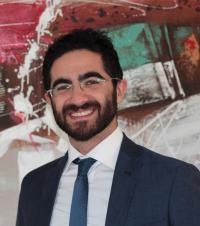30-10-2024 Faculty Seminar
Date: October 30th, 2024, 12:15 PM, Place: Narbutta 85, NT 321
Topic: „The biomechanics of the periodontal ligament in tooth movement predictive models”
by Prof. Michele Tepedino from University of L’Aquila (Italy)
Abstract:
Orthodontic treatment is based on the principle that teeth can be moved within the alveolar bone when a force is prolongedly applied to them. This is done to achieve a functional and aesthetical spatial relationship between the teeth, that is defined as an ideal occlusion. The clinical experience reveals that tooth movement abides to the general laws of static mechanics, and the concepts of force vectors and couples needed to provide the desired tooth movement are well established and codified. However, in some situations the complexity of the interactions between the orthodontic appliances (which applies the force), the teeth and their surrounding structures (known as periodontium) doesn’t allow for a conscious estimate of the amount of force applied and of all its components, which is pivotal to obtain efficient biomechanics and a low risk of side effects. Moreover, our actual knowledge of the mechanisms that produce orthodontic tooth movement, and in particular of how the mechanical stimuli produced by orthodontic forces are translated into bone remodeling, is still insufficient. It is possible that the presence of a soft interface between the tooth and the surrounding alveolar bone, i.e. a ligament made of collagen fibrils called the periodontal ligament, plays a major role in orthodontic force mechanotransduction, as well as the liquids present in the blood vessels that irrorates the ligament and in the extracellular matrix. The current mathematical models used to describe tooth movement failed to describe accurately the role of the periodontal ligament. A new predictive model able to overcome those shortcomings would be of fundamental importance to improve our understanding of orthodontic tooth movement and to provide a method to reduce the biological cost of studying the behavior of new appliances.


